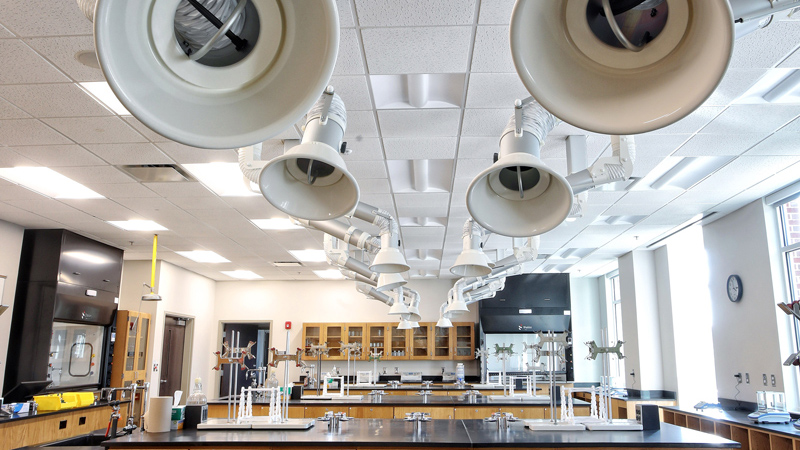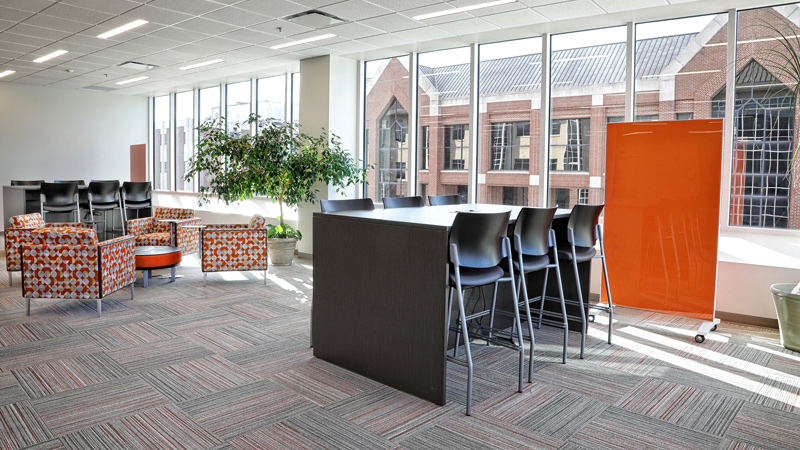Recent Articles
LEO A DALY Earns AIA Nebraska Design Award for Third Consecutive Year
AIA Nebraska recognizes the Omaha VA Ambulatory Care Center with an Architecture Citation Award
Innovative Design Strategies Revolutionize Veterans’ Mental Health Access in New and Renovated Facilities
LEO A DALY commemorates its impactful journey in designing state-of-the-art mental health facilities for veterans from coast-to-coast.
Zach Klebba Picked for Building Design + Construction’s 40 Under 40 Class of 2023
This LEO A DALY architect is one of 40 under 40 selected nationally for his industry contributions, community service and leadership.
Harbin Riverside District Recognized for Excellence in Design
Harbin Riverside District was awarded for excellence in design from the Shanghai Exploration and Design Trade Association.
LEO A DALY Earns Top Interior Design Award from The Hospitality Industry Network (NEWH) Dallas Chapter
LEO A DALY Dallas studio wins interior design award for design excellence and their contributions to the hopsitality industry.
New Spearman C. Godsey Science Center opens at Mercer University
The undergraduate lab building accommodates growing enrollment and research in chemistry, biology and neurosciences

After years of planning, the largest capital project at Georgia’s oldest private university is complete.
The $44 million, 143,410 square-foot Spearman C. Godsey Science Center gives undergraduates at Mercer University access to 60 state-of-the-art teaching and research labs, accommodating a growing enrollment and research activity in chemistry, biology and neurosciences.
The Patterson Building was demolished to make room for the signature structure, which now anchors a science quadrangle incorporating School of Medicine and School of Engineering facilities and Willet Science Center.
The first day of class in the new facility was January 8, 2018, a landmark moment for the University, coinciding with the 185th anniversary of Mercer’s opening in Penfield, Georgia, in January 1833.
“Our undergraduate sciences faculty and administrators have invested several years in meticulously planning a 21st century science facility that will serve our students and faculty well into the future,” said Mercer President William D. Underwood.
Graduate-level facilities for undergrads
Designed by architects LEO A DALY and Hussey Gay Bell, the science building gives undergraduates at Mercer unprecedented access to graduate-level research facilities.
“We designed this building with the goal of making Mercer University students more competitive candidates for graduate-level research. The facilities here are comparable to any PhD-level lab in the country, which gives a distinct advantage to Mercer students,” said Avery Sarden, AIA, Principal-in-Charge with LEO A DALY’s Atlanta office, which served as project designer and lab planner.

Aside from general biology and chemistry labs, the center includes specialized teaching labs in soil and field biology, anatomy and physiology, infectious diseases, molecular and cellular biology, organic chemistry, problems in chemistry and biochemistry.
Additional specialized labs housing instrumentation and a nuclear magnetic resonance spectrometer, as well as a laser lab, computational center, growth room, cold room and tissue culture suite are included in the facility. Lab space is also devoted to science courses offered through Penfield College and Tift College of Education.
Flexibility was built into the design to enable changes in pedagogy over time.
“We’ve been very smart in designing to have spaces dedicated to individual labs and individual research techniques but also to give us enough flexibility that later on down the road we can be able to adapt to new techniques and new areas of study,” said Dr. Kevin Bucholtz, Associate Professor of Chemistry.
Designed for “learning in motion”
The designers used an inclusive planning process based on PKAL principles to maximize collaboration in the design process and increase opportunities for multidisciplinary learning in the finished product. PKAL is an initiative by the Association of American Colleges & Universities that has become the gold standard in designing vibrant, collaborative STEM learning environments.
“A university is like a city. Innovation happens at the intersections, where different groups rub against and learn from each other. That’s the kind of creative friction we wanted to enable in the design, and something we believe has a huge impact on student outcomes,” said Bob Thomas, Science and Technology practice leader for LEO A DALY.
The planning process identified core adjacencies, efficiencies and opportunities for collaboration in the new building, and arranged them to maximize chance encounters between students and faculty of different research disciplines.
“The sedentary days of learning and teaching while one sits in a lab have gone to the wayside. Mercer’s new undergraduate sciences building was designed and constructed around learning in motion,” said Robert Armstrong, AIA, Principal Architect at Hussey Gay Bell, which served as architect-of-record.

The program is laid out in two wings that come together in the corner commons space. The commons space is located in a prominent corner of the site, forming a gateway to the new STEM quad created by Spearman S. Godsey Science Center and the existing engineering buildings.
The commons space serves as an informal gathering space in the building, it is populated with “coffee house” style seating to encourage small group collaborations and study. One of the corridors is intentionally oversized, allowing students to spill into the building wings and engage in for break out sessions outside lecture halls, teaching labs and the research labs on the upper floors.
Fast facts on the Spearman C. Godsey Science Center:
- 143,410 sq.ft.
- 7 lecture rooms
- 46 offices
- 60 labs
- 10,465 sf research space
- 4,400 cubic yards of concrete
- 990 tons of steel
- 360,000 exterior bricks
